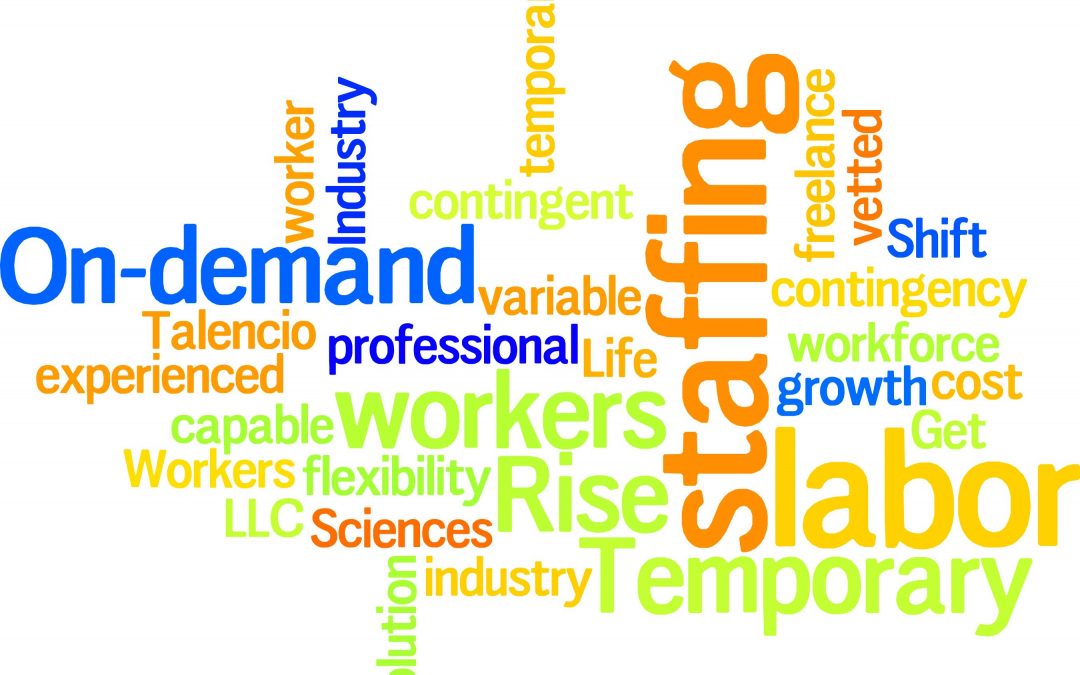Surely you’ve noticed – the use of temporary workers is on the rise across industries and across geographies. According to the American Staffing Association (ASA), 3 million people are employed by U.S. staffing companies weekly; 11 million temporary and contract employees are hired by U.S. staffing firms over the course of a year. Since the end of the recession, the ASA reports that the staffing and recruiting industry has created more jobs than any other single industry in the U.S., with temporary workers accounting for roughly 2% of the U.S. labor market. Labor force watchers predict temporary staffing will grow by 6% in 2014 and another 7% in 2015, with growth in this sector attributable to the hesitancy of employers to add to their full-time employee base in a time of sluggish economic recovery and economic uncertainty. The flexibility to have a workforce that can be ramped up or ratcheted down to meet workforce demands is appealing.
But how did we get here? Is this shift toward a greater reliance on contingent workers really new? Perhaps not, according to Joe Labianca who holds the University of Kentucky’s Gatton Endowed Chair in Management.
Taking a long historical view, Professor Labianca explains that there was a time when all workers were essentially “contingent laborers” who hired themselves out to perform a job or service. But with the Industrial Revolution and the introduction of the assembly line, that arrangement changed, and employees were hired to work exclusively for a single company or business. That work model had a long run, reaching its zenith during the post-World War II period when everyone was fully employed by a single employer and the U.S. was the only industrial power unscathed by the war. It is a sense of nostalgia for that period, Labianca posits, that caused society to view a 30-year career with a single employer as the ideal, when “in reality, the workplace was never intended to operate that way.”
Global competition, beginning in the 1970s and accelerating since the Internet revolution of the 1990s, began to push U.S. companies to seek more flexibility with their workforce to compete effectively with industries in China, Japan and India, among others. With increased global competition, it is no longer prudent to schedule long assembly runs, Labianca explained, making it necessary to have a workforce that is more flexible to fit with the timing and amount of work to be done.
The advantages of flexibility within a company’s workforce are significant: matching the workforce with demand, turning labor from a fixed cost into a variable cost, and increasing utilization of labor resources. Working with a staffing company also allows the outsourcing of labor involved in recruiting, screening and interviewing job candidates and in positions labeled as “temp-to-hire,” the temporary employee’s time on site can serve as a “trial” period to determine whether the temp worker and the position are a good fit.
If your company would benefit from the availability of highly qualified, vetted life sciences staff on a temporary, temp-to-hire or full-hire basis, contact Talencio.
To learn more about how Talencio has helped other life science companies with capacity and expertise needs, contact us directly at 612.703.4236 or email to: pnorbom@talencio.com. Talencio, LLC is the preferred provider of vetted, accomplished professionals to the Life Sciences community.
Resources:
Robin Roenker. The Rise of the Temporary Worker. The Lane Report. May 7, 2014.
